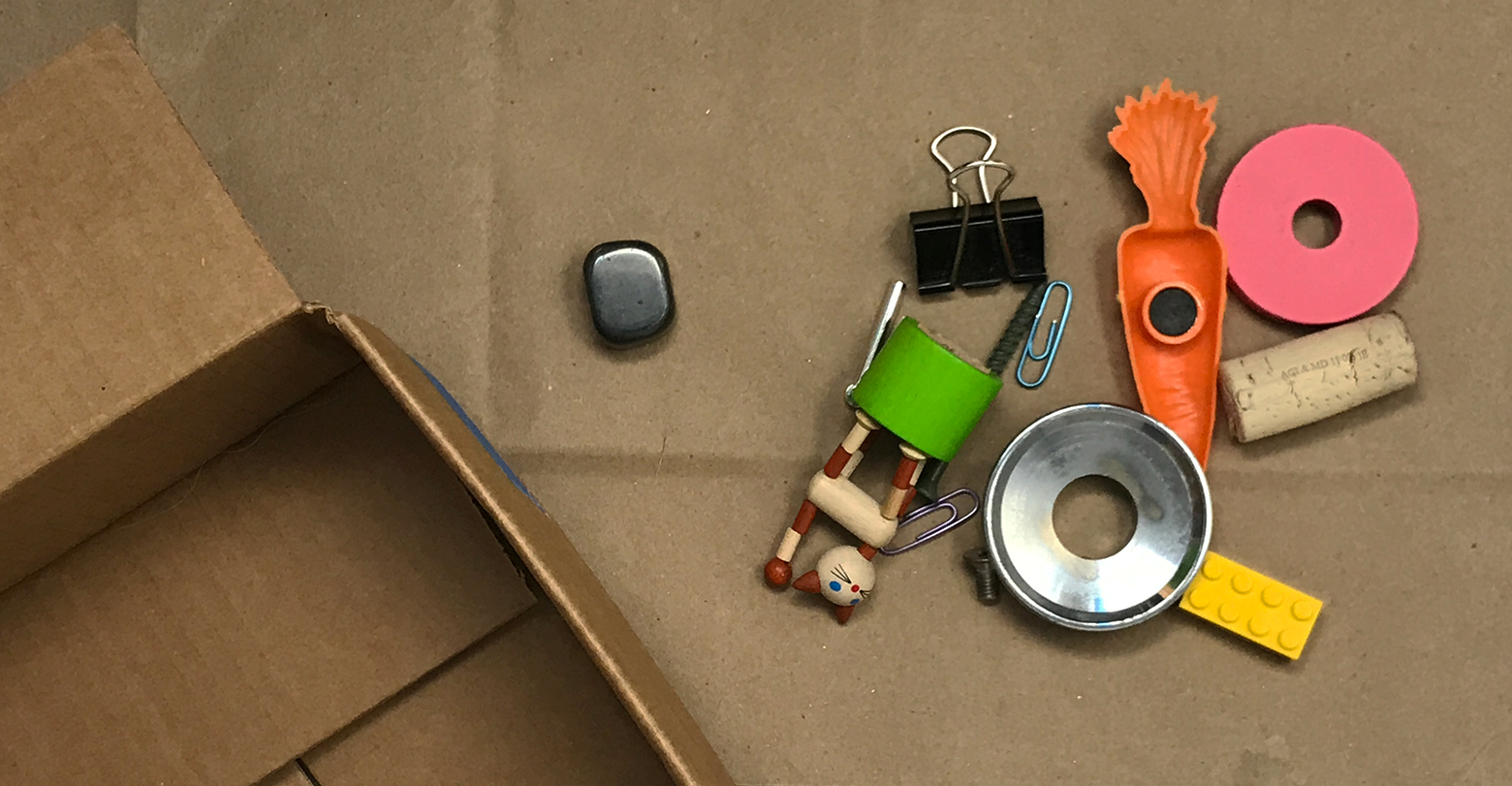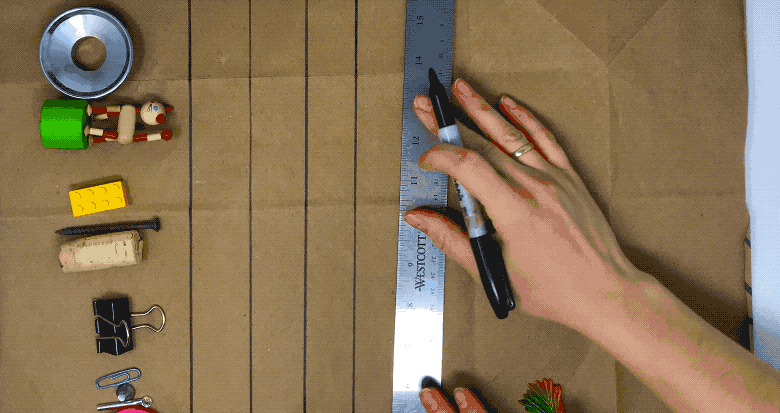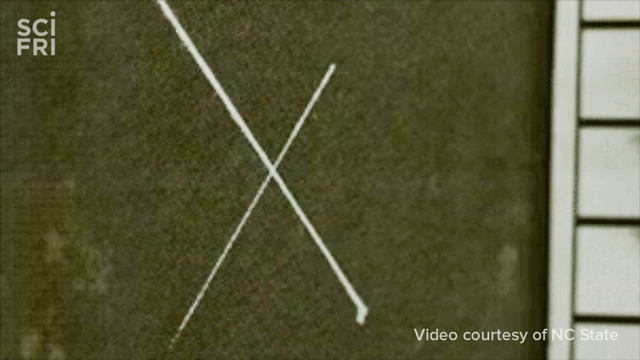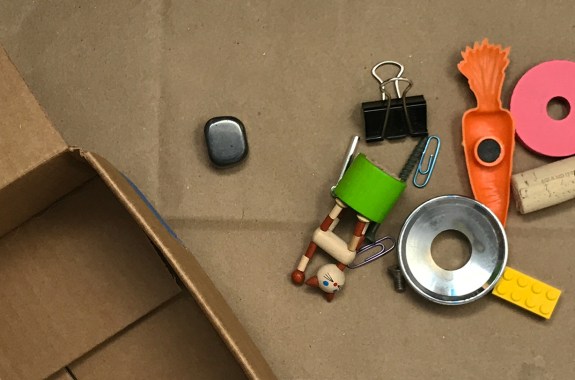What You’ll Do And See
It’s just you, a magnet, and a penny—on a quest to find treasures and find out if each one is metal, or not?

Materials
- Magnet: Any refrigerator magnet works, but the stronger it is, the more fun you can have
- Penny: Your little copper friend, but a dime can work too
- A box or bag: For holding your treasures
- Bonus Items: A splash of vinegar or lemon juice, and a sprinkle of salt in a glass jar
What To Do
1. Collect stuff with the help of an adult:
Find a bunch of objects that are small enough to fit inside your hand, and that aren’t important or valuable. Check with an adult to make sure everything you’ve found is safe and OK for you to have. Tip: Set a timer for 10 minutes or choose 1-2 rooms to focus your search.
2. Score the objects: Are they metals?
For each object you collected, answer the following questions to determine if each object contains metal. For every “yes,” give that object one point. Make a scoresheet to help you keep track, or set up your objects like they are in a race, and advance them one step for every “yes” answer.
- Is it shiny?
- Does it make a “ding” or “clink” sound when you tap it with the penny?
- If you scratch it with a coin, is the scratch shiny or dull?
- Is it heavy for its size?
- Does it block light completely?
- BONUS: Does a magnet stick to it? If yes, it’s an automatic win, magnets are only attracted to metal!
3. Which objects are metals?
Most metals are shiny, solid, make a “ding” sound when you hit them, are heavy for their size and block light. Objects that finished with one or fewer points are probably not metals. Objects that score more than one point are probably metals!
Now that you know how to find metals, can you find a couple more objects that are likely metals, and add them to your collection?

What To Do Next
Separate magnetic from non-magnetic metals: Not all metals stick to magnets. Some, like gold and silver, don’t stick at all! Do any of your objects stick to a magnet? These are called ferromagnetic metals! This means they have a very strong magnetic attraction.
Polish your metal objects: Take a couple of your metal finds, and place them in a glass jar with a tablespoon of vinegar or lemon juice, a quarter cup of water, and a little salt. Swirl the objects around for a few minutes. What happened? Some metal objects, like the penny, will get shinier as dull metal on the outside dissolves into the salty, acidic solution in your jar. Others may have coatings to keep them from dissolving. Which of your objects get shinier?
So What?!
Being able to tell whether something is made out of metal or not can come in handy. Metals can dissolve when they get wet with water that is acidic or salty. That’s great for polishing metals to make them shiny—like pretty pennies—but bad if you’re trying to keep metals from breaking or getting damaged over time. Things like water pipes, nails, window sills, lawn furniture, and car parts can be damaged if they are exposed to strong or weak acids (like battery acid or acid rain) or salts (like road salt or ocean water).
Learn More From Metal Experts

Hear more from the people who engineer metals to resist erosion, make art, and stop bullets.
- Listen: Lasers that help metal resist water and ice (12 mins)
- Read: The beauty of magnetic fluids, called ferrofluids
- Listen: Steel foam that stops bullets (7 mins)
- Watch: Neuron art made out of gold (6 mins)
- Participate: Figure out if your water pipes are plastic or some type of metal, and help the citizen science project Crowd The Tap map lead pipes in the U.S.
Share the metals you found in your home, or show off your fancy metal polishing skills with @scifri on Twitter or Instagram!
Meet the Writer
About Ariel Zych
@arieloquentAriel Zych was Science Friday’s director of audience. She is a former teacher and scientist who spends her free time making food, watching arthropods, and being outside.
